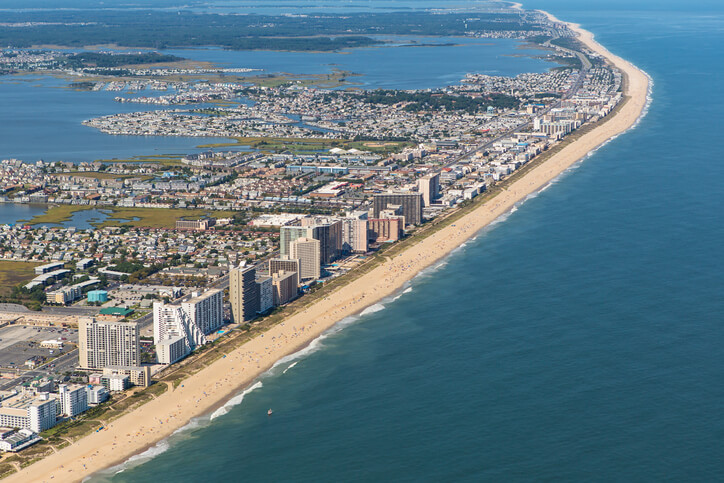In order to resolve concerns about the visual impacts of its proposed wind farm off the coast of Maryland, developer US Wind has offered to move the first line of turbines farther offshore, as far as five miles to the east.
According to Paul Rich, US Wind’s project development director, this proposal is the start of a dialogue with Ocean City officials and is intended to demonstrate the company’s willingness to modify the project layout.
Recently, the Maryland Public Service Commission (PUC) held two public meetings to review applications for the Offshore Renewable Energy Credit (OREC), made available thanks to the Maryland Offshore Wind Energy Act of 2013.
At the first meeting, held on March 25, US Wind pitched its proposed project, a 750 MW installation approximately 12 miles offshore in the Maryland wind energy area. The company expects that the wind farm will create approximately 5,000 manufacturing jobs and produce $16 billion in economic output.
According to US Wind, 67 people at the meeting spoke in support of the project plans, in addition to written testimony from Baltimore Mayor Catherine Pugh praising US Wind’s application.
Although no one in attendance openly opposed the project, Ocean City Mayor Rick Meehan expressed concerns about the impact on the ocean view.
Attempting to address the issue head-on, Rich says he quickly approached the mayor and requested a meeting with the city council to present the wind farm and its many potential benefits.
On April 3, at the second public meeting, Rich was invited to give his presentation, which included visual renderings of the proposed project.
After seeing how near to shore the wind farm would appear once built, the Ocean City Council unanimously voted to send a letter to the PUC, the governor and other local authorities opposing the “visual pollution” for its potentially negative impacts on tourism and property values.
Wasting no time, Rich sent a letter in response to the mayor and council within the week, acknowledging their concerns and proposing to push the wind farm five miles farther offshore. According to US Wind, this move would dramatically reduce the viewshed impacts for Ocean City – at least 35%, if not more.
In an interview with North American Windpower, Rich explains, “In an effort to be responsive, I wanted to express to them, soon after the meeting, that we’re open to discussing whether or not it makes sense for us to move the wind farm further east and minimize the viewshed impacts a little bit more.”
Emphasizing the developer’s willing attitude, he says, “We just want to be responsive and good corporate citizens to react quickly to what we heard from Ocean City and the mayor, and we’re hoping they’ll have the same approach.”
Rich adds that he hopes they’ll look to the success of offshore wind in Europe and even to the newly developed Block Island Wind Farm in Rhode Island for reassurance.
Built by Deepwater Wind – the other developer being considered for the OREC by the Maryland PUC – the Block Island Wind Farm is the only other offshore wind farm currently operating in the U.S. The 30 MW, five-turbine project began operations in December 2016.
In the spirit of full cooperation, US Wind has already begun redesigning the project in an attempt to address Ocean City’s concerns.
Moving the turbines back beyond the 12-mile range would inevitably add to the project cost – approximately $5 million, considering export cables run approximately $1 million per mile – but US Wind is ready and willing to take it on.
Concerning equipment, Rich says relocating the turbines would not require a change in turbine model or type or height of the towers. As of now, the developer has the option of using Siemens 4 MW turbines or GE 6 MW turbines.
“In my letter that I sent to them, I said we’re doing the engineering to understand what it looks like to move them as much as five miles further east, and my request was that we have a meeting as soon as they have time to talk through this.
“There shouldn’t be a wall but, rather, a membrane for transparent conversation around these issues that can lead to the best project possible,” he explains.
If given the green light, the first phase of the project would be in service in 2020, with subsequent phases each year until the full build-out by 2023.




